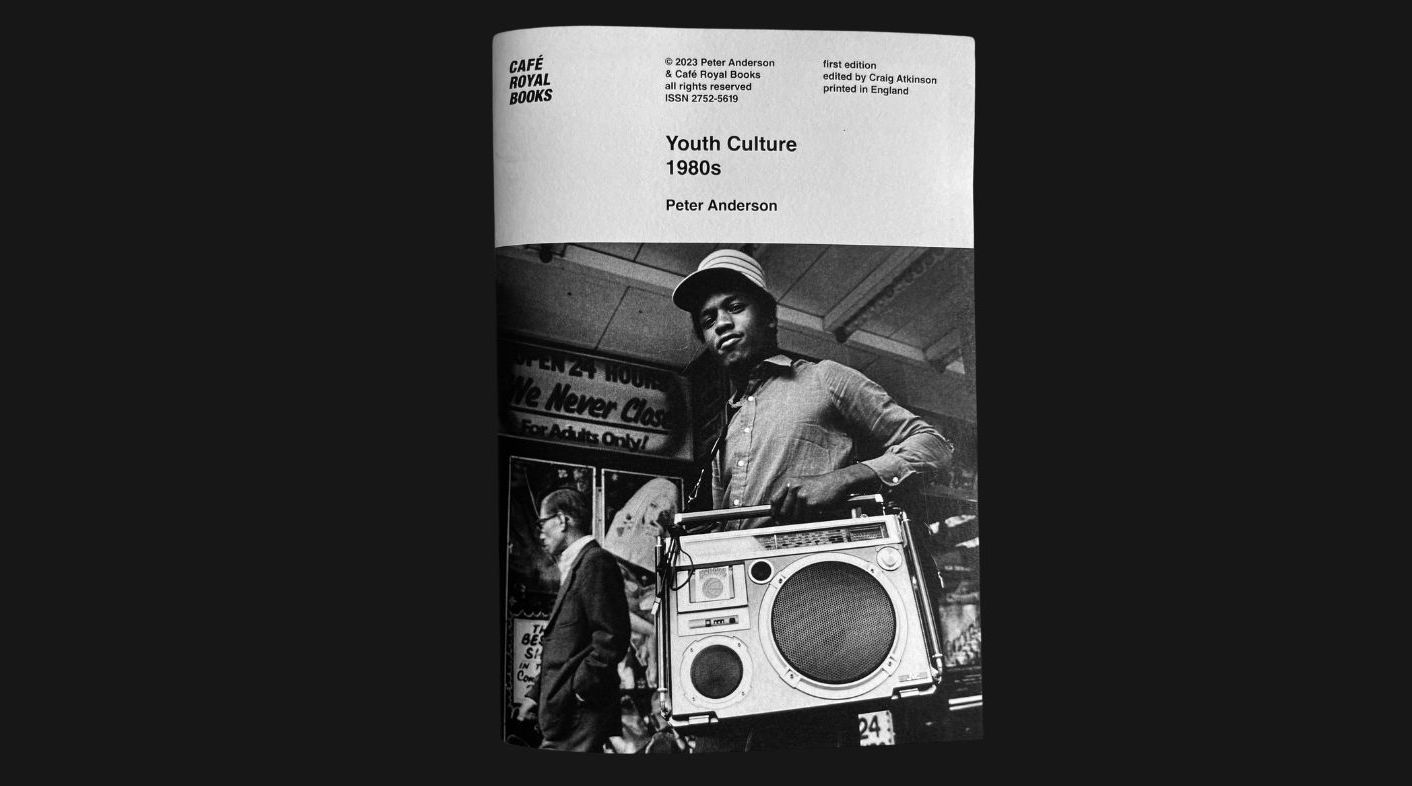Back in 1979, 19-year-old Peter Anderson decamped from his native Glasgow and set his sights on London to study at the Royal College of Art with the dream of becoming a fashion photographer. He arrived in the city just a post-punk era began to take root, radiating out from underground pubs where bands took the stage to perform. Immersed in the scene, he began Taking photographs of the bands, fans, and personalities who sparkled at night. “I was in the right place at the right time,” says Anderson, who quickly landed a job as staff photographer at New Music Express (NME). “There was a whole new wave of post-punk, but there were still punks around. NME wasn’t about just covering all the big stadium acts; it was very much championing new bands.”

New York Post (1980) |
 : Peter Anderson
: Peter AndersonAs the 1980s took hold and the reign of Margaret Thatcher began, a new generation of artists, musicians, radicals, and rebels of all stripes turned to music as the voice of resistance — with indie magazines forming the lifeline of community. Anderson began contributing to new mags like i-D and The Face, which turned the spotlight on youth culture as it was coming up on the streets. Without the invention of the internet, digital or video technology, or home computers, photography and publishing moved at a slower pace. Relying on film cameras and darkrooms, landlines and typewriters, travel agents and paper money, Anderson’s assignments became mini-adventures.
In 1980, he decided to return to New York after an unforgettable first visit back in ’76. “I had been in Canada, and took the bus from Toronto to New York. That was quite an experience,” he says. “The night before, I went to see Taxi Driver, which had just come out. Then I got on the bus, went to Manhattan, got off at Port Authority, and stayed at the YMCA, just a few blocks down. It was just like walking into a film set. People would say to me, ‘Don’t do this, don’t do that. It’s too dangerous’ but I wasn’t fazed by any of that.”

 : Peter Anderson
: Peter AndersonAgainst the backdrop of Hollywood copaganda that cast 1970s New York as a neo-realist spectacle of corruption, destruction, and decadence, the city lived up to its cinematic charms, inspiring Anderson to pursue his personal passion for street photography. When he wasn’t on assignment, he hit the streets to engage with a world that was every bit as exciting as the movies promised. After a decade of near bankruptcy, white flight, and “benign neglect,” New York was a dazzling wreck sparkling with the promise of new beginnings.
Although Anderson’s trips to New York were brief, he made the most of his time in town, regularly hitting up the city’s pulsing centers of public life on a mission to chronicle the explosion of portable music technology just taking hold with boomboxes, Walkmans, and transistor radio headphones. With the arrival of Hip-Hop in the 1970s, the city became a hub of third spaces where as music took center stage, transforming lampposts into open sources of power for park jams.

Tanfastic 42nd Street (1980) |
 : Peter Anderson
: Peter Anderson Roller boogie came out of the clubs and made its way to Central Park, while the boombox replaced the acoustic guitar at smoke sessions in Washington Square Park. Portable radios strapped to the back of bikes blared disco and salsa as they sailed down the streets, the city awash with music. There was simply nothing better than being outside.
With the recent publication of Youth Culture 1980s (Café Royal Books) Anderson looks back at this early chapter of his career, a time of innocence made all the more poignant for all that is to come in the plagues of Ronald Reagan, crack, and AIDS that would destroy so many lives throughout the ‘80s. Amid the whirlwind of city life, these photographs offer a kaleidoscopic look at fleeting scenes of community, camaraderie, and creativity that form the hallmark of New York public life.

Boom Box (1980) |
 : Peter Anderson
: Peter Anderson As a street photographer working at a time before such practices were commonplace, Anderson himself became a figure in the story he was chronicling. He remembers wandering through the streets of Soho late at night, camera in hand when he passed a gallery window and spotted a familiar figure inside: Keith Haring working on an exhibition. “We acknowledged each other and I made a couple of quick photographs, then walked away and he got on with his painting,” he says. “That’s the sort of work I always wanted to make.”

Washington Square Crew (1980) |
 : Peter Anderson
: Peter Anderson 
B-Boy Rollers (1980) |
 : Peter Anderson
: Peter Anderson You can follow Miss Rosen on Twitter



